If brightly coloured jumpsuits and accountants from Nottingham not being able to solve ridiculously easy challenges are your cup of tea then The Crystal Maze would have been your kind of television event. Oh, and if you were particularly fond of foil and big fans then you would definitely have programmed your video recorder to ensure you didn’t miss it.
(For those of you young enough to now be thinking ‘What on earth is a video recorder? – it’s a bit like your Sky+ box, only you had to find a big plastic tape before you wanted to record something, check that you weren’t about to wipe off your sister’s wedding video, programme the ludicrously complicated timer and then hope the programme itself didn’t over-run or else you’d lose the crucial cliffhanger at the end of Neighbours. Simple, hey?)
The Crystal Maze was a slightly peculiar, totally immersive game show where teams of contestants would take part in a series of tasks in order to win (or more often spectacularly fail to win) crystals. The number of crystals they got would determine how long they got to attempt the final part of their challenge; collecting gold foil tokens in the Crystal Dome (a sort of round greenhouse with a very large draft) in order to win a generally underwhelming prize.
Each team was comprised of three women and three men, with two of them taking the roles of team captain and vice-captain and they were directed around the set by the unforgettable Richard O’Brien (The Rocky Horror Show).
O’Brien really held the show together – it was his eccentric personality and vaguely camp presenting style that made it worth watching. In his full length leopard skin coat (in the first two series at least, in three and four this changed to a black and white one) and sporting a very smooth and shiny head, the contestants’ pressure was added to by his overly-energetic leaping about and often nonsensical commentary. He would generally buoy up the teams when they were doing well, although he wasn’t above a few digs and jokes at their expense when they displayed particular incompetence. One of his little quirks was to pull out a harmonica and state that he was going to play something exciting, before actually blowing a very short, monotonous ditty and then putting it away again.
In certain situations the teams would also meet characters who would set them challenges. The most seen one of these was ‘Mumsy’ – O’Brien’s pretend mother, who was herself a fortune teller.
The Crystal Maze’s name was actually fairly misleading as the set was not a maze at all but made up of four connected zones that the team would play in turn. In the first three series these were the Aztec Zone (a ruined ancient village with ropey looking palm trees all over the place); the Medieval Zone (a shadowy castle complete with candles and cobwebs); the Industrial Zone (inside a chemical factory) and the Futuristic Zone (a space station). For the fourth to sixth series the Ocean Zone, which was set on sunken ship, the S.S. Atlantis, replaced the Industrial zone.
Getting to whichever zone was chosen for the team to start in would involve an array of different techniques that O’Brien would lead them through; they might have to use a kayak to cross a river, climb a ladder or a rope, answer a question or open a portcullis. To get from one zone to another they would run through tunnels, go up in a lift or make their way up a ladder. Once in the zone they would be told about the next challenge and the team would pick the person they felt would be the most adept at completing it to step up and compete for the crystal. There were lots of different games that had to be completed, including physical ones which would test their strength and speed, mental puzzles which tested their intellectual capacity (and often found it lacking), mystery games such as treasure hunts and skill games, which were usually about hand-eye co-ordination or other aspects of their dexterity.
Some of the tests were mildly tricky but others were so mind-numbingly simple that a lot of the fun to be had, as a viewer, was in shouting things at the television. ‘How can you not see what you have to do?’ or ‘All you have to do is get the ball in the hole!’
In fact, The Mary Whitehouse Experience (an early 1990’s sketch show starring Rob Newman, David Baddiel, Hugh Dennis and Steve Punt) actually parodied The Crystal Maze’s level of simplicity by having a man (Dennis) in a room where the challenge was to make a cup of tea. Dennis tried to complete the task as best he could but was unable to figure how the components (teapot, cup and saucer etc.) went together. His team mates, outside the door, shouted helpful comments such as ‘Try putting the teapot on your head!’ but Dennis after a minute or so of shambolic non-tea making panicked and screeched ‘I’m coming out!’
In the real show, if a contestant was unable to complete a task in the time given (between two and three minutes) they could choose to leave the room, forgoing their crystal. If they didn’t leave the room in time then they would get locked in. There were also a few games that came with an automatic lock-in; if the contestant got something wrong (such as setting off an alarm a certain number of times or making a wrong move in a puzzle) then they would be locked in their room. To get them out again the rest of their team could buy them out using one of their already won crystals. Bear in mind that the members of the team didn’t actually know one another (they were made up of individual applicants) so if they were low on crystals there was no sense of loyalty; they would often just abandon their companion and move on. They could be bought out later if the team decided they were needed for a game or for the final Dome challenge.
O’Brien left after the fourth series and was replaced by Ed Tudor-Pole (from the band Tenpole Tudor who had a top ten hit with ‘Swords of a Thousand Men’). Tudor-Pole had a similar quirky style to O’Brien, although slightly darker in tone but he often had more empathy for the contestants when they failed to win a crystal.
The first series was broadcast in February 1990, followed by one a year until 1995, plus five Christmas specials, which featured teams of children roaming the Maze instead of grown-ups. After the sixth adult series finished in August 1995 (38,000 people apparently applied for this last series) Channel 4 chose not to renew the contract with Chatsworth TV (who made The Crystal Maze) and the dome’s fans were switched off for good.
The Crystal Maze has been replicated in various formats since then: as a video game in pubs and arcades and on a much bigger scale as ‘The Cyberdrome Crystal Maze’. These were found in five locations across the UK, with one also in Japan and you were able to play computerised versions of the game within it. Dubai also had a similar attraction at one time but all of these have now closed. There is still a children’s style Crystal Maze at a fun centre in Kent and many team building companies offer people the chance to enrage their business colleagues by not being able to fit some jigsaw pieces together in less than two minutes.
A June 2015 Guardian report announced that a ‘live, fully interactive Crystal Maze experience in London’ looked likely to open in the autumn – so if you were a fan of the original programme, now is your chance to take part. Me? I’m already ripping up all my silver foil and practising shouting ‘I can’t see what I have to do – I’m coming out!’







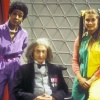
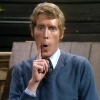
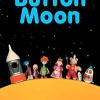
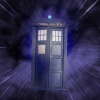
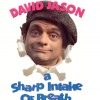
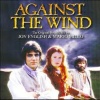
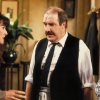

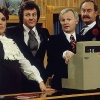

Do You Remember The Crystal Maze?
Do You Remember The Crystal Maze?